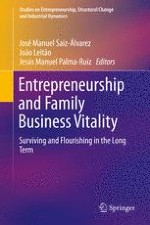2020 | OriginalPaper | Chapter
Between Reason and Emotion: Socioemotional Intelligence as a Non-tangible Resource for Strategy, Operation, and Sustainability for the Family Business
Authors : Danny Christian Barbery-Montoya, Carlos Luis Torres-Briones
Published in: Entrepreneurship and Family Business Vitality
Publisher: Springer International Publishing
Activate our intelligent search to find suitable subject content or patents.
Select sections of text to find matching patents with Artificial Intelligence. powered by
Select sections of text to find additional relevant content using AI-assisted search. powered by
